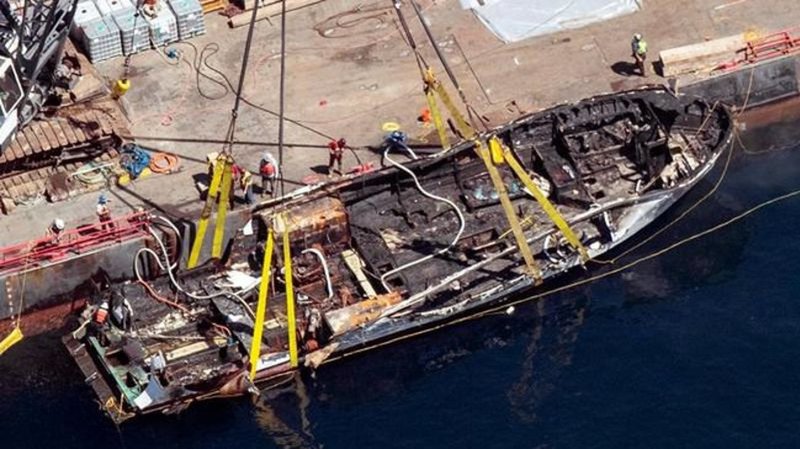
No emergency training for crew on boat where fire killed 34
LOS ANGELES — Crew members on a dive boat say they were never instructed on emergency procedures before a predawn fire swept through the vessel as it was anchored off the South California coast, killing 34 people as they slept below deck, according to federal documents released Wednesday.
National Transportation Safety Board investigators say the cause of the blaze aboard the Conception remains undetermined but a possible ignition point was phones and other electronics plugged into outlets. One crew member told investigators he saw sparks flash when he plugged in his cellphone hours before the fire.
The boat was carrying 33 passengers on a Labor Day weekend scuba diving expedition last year. The fire broke out on the trip’s final night as the Conception was anchored off Santa Cruz Island, about 25 miles (40 kilometres) south of Santa Barbara, the boat’s home port.
All of the passengers and one crew member sleeping below deck were killed. The other five crew members, including Capt. Jerry Boylan, survived. They barely escaped after trying in vain to save the others, authorities said. Boylan made a mayday call at 3:14 a.m., saying, “I can’t breathe,” before abandoning ship.


